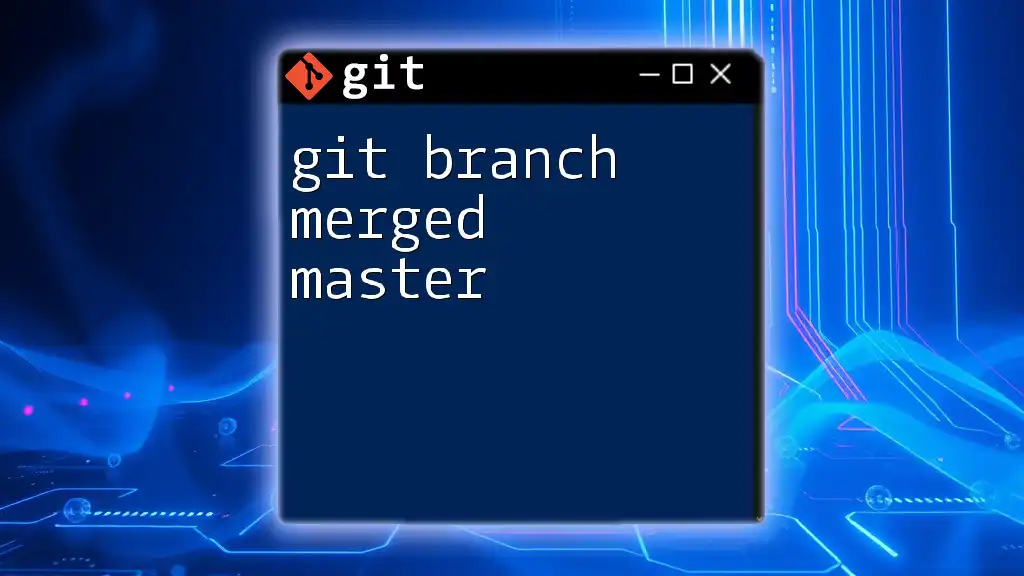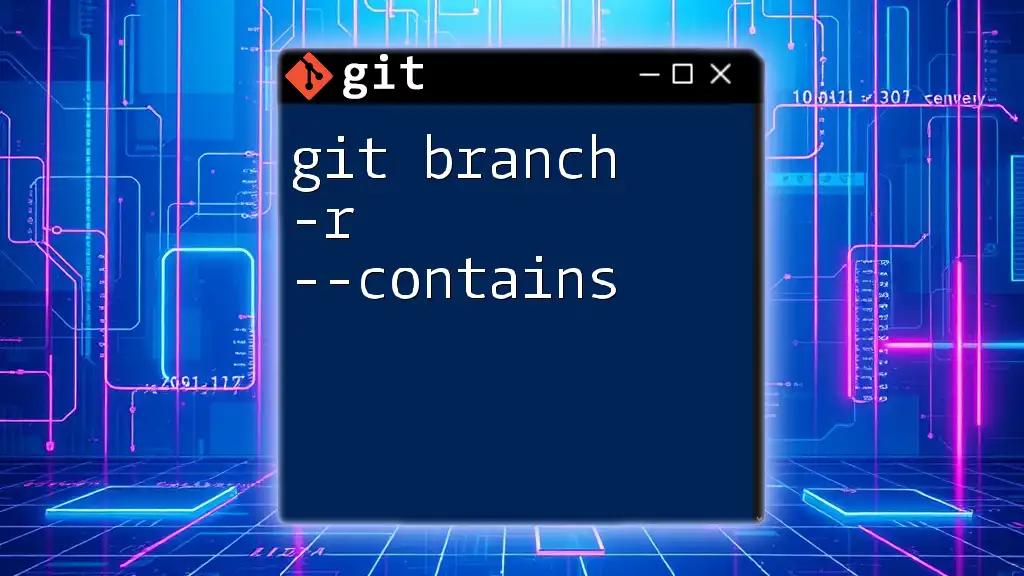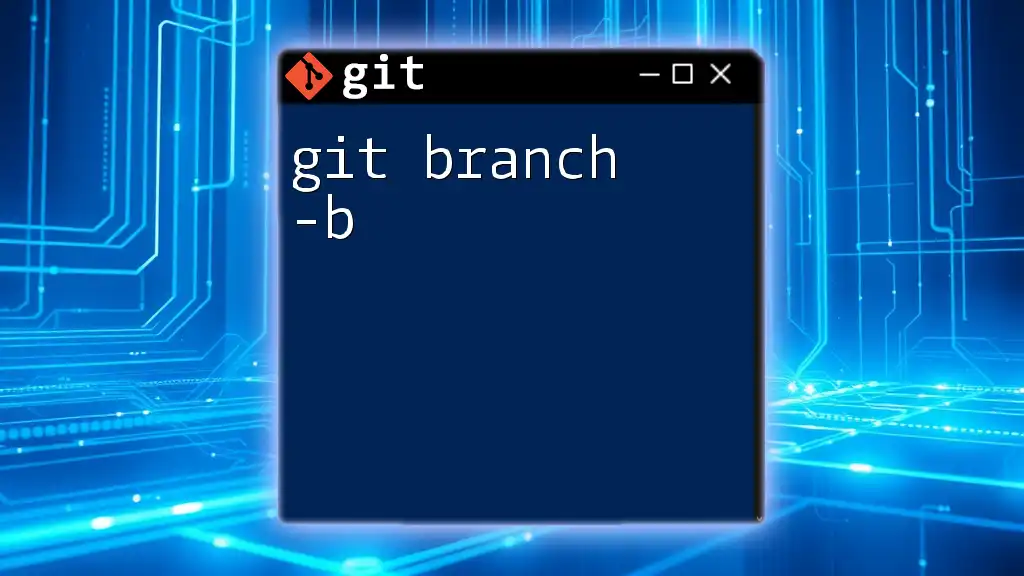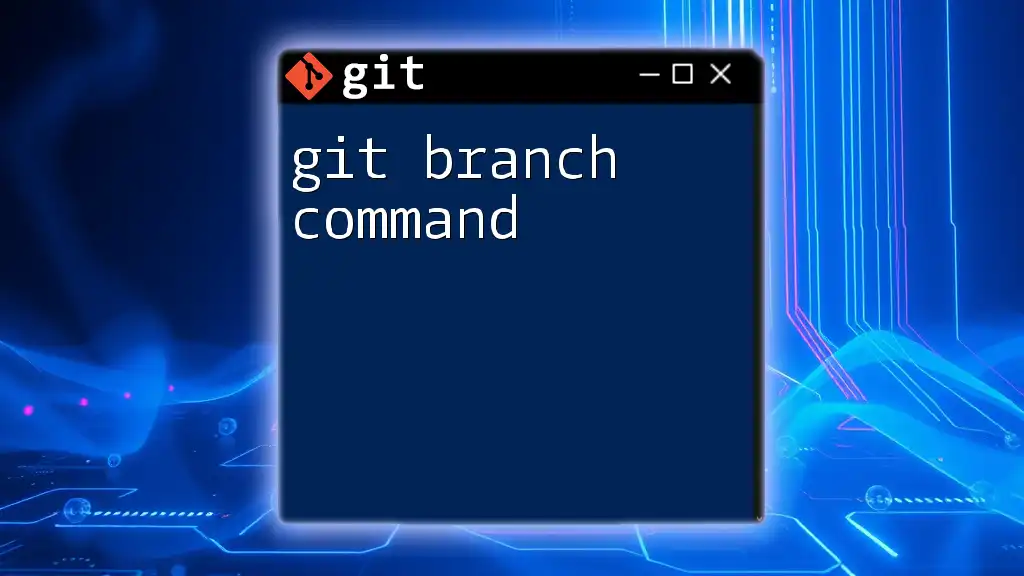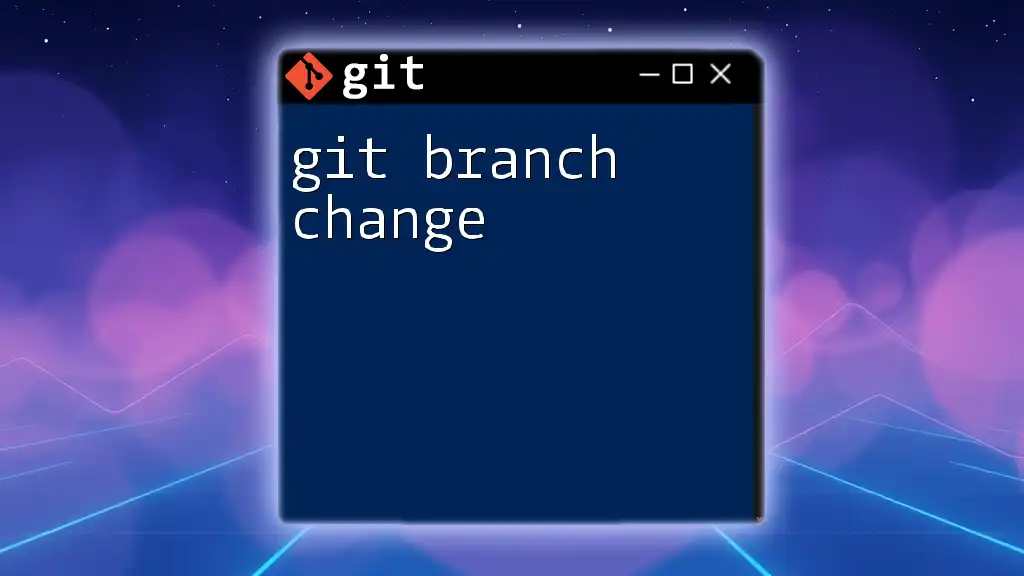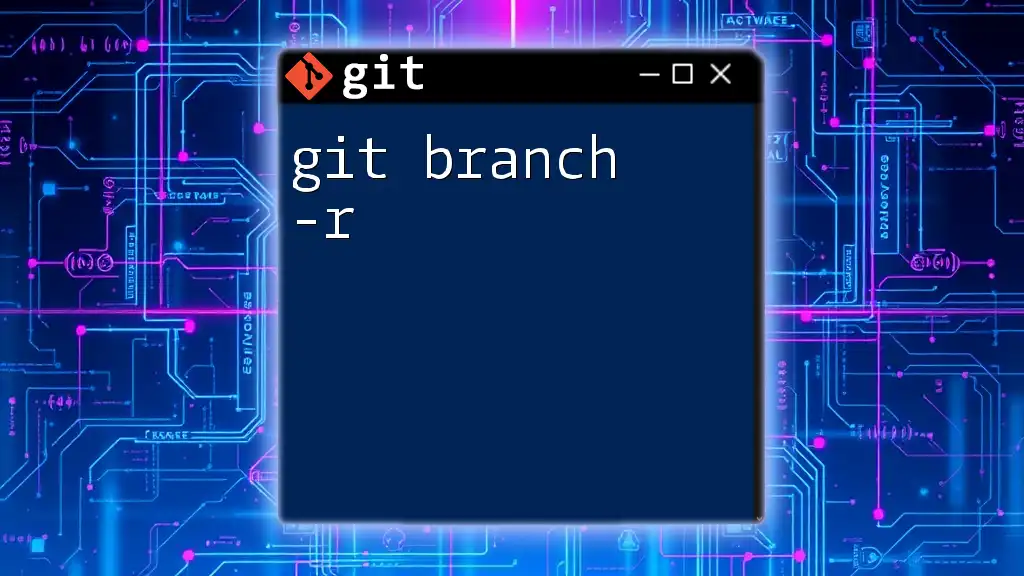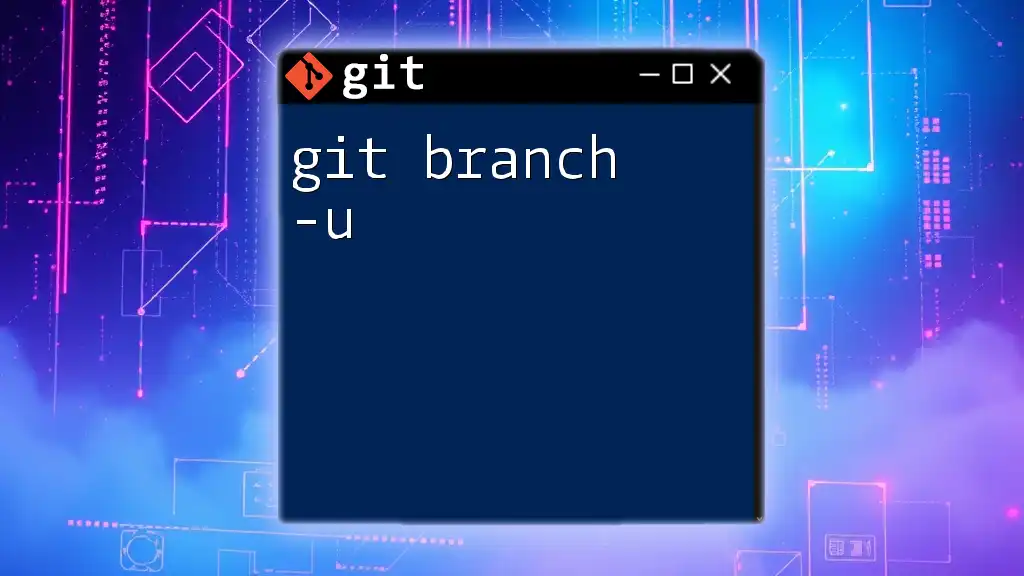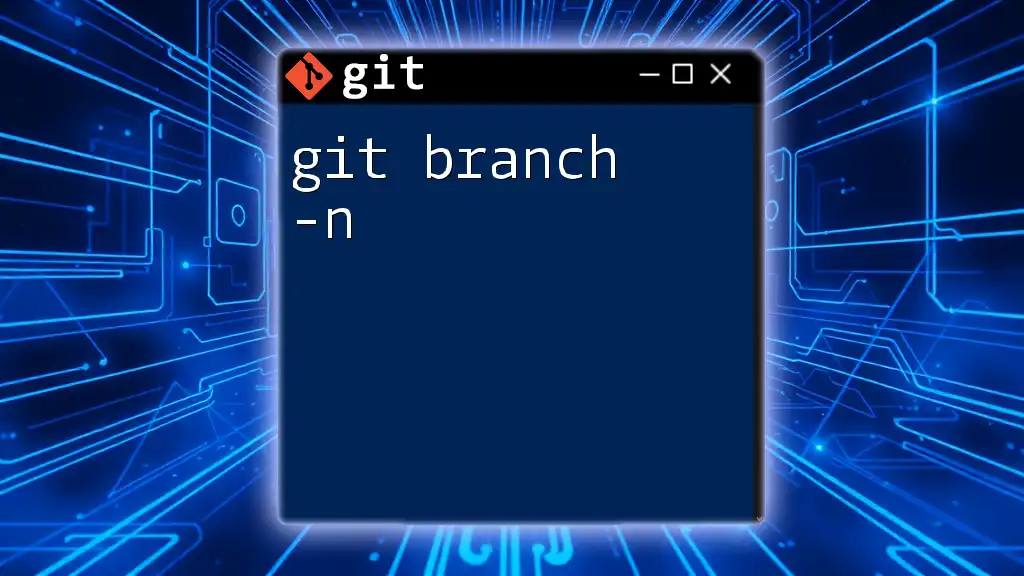The `git branch -m` command is used to rename a branch in your Git repository, allowing you to change the current branch's name or rename another branch if specified.
git branch -m old-branch-name new-branch-name
What is `git branch -m`?
The `git branch -m` command is an essential tool for Git users, allowing you to rename branches with ease. It is particularly useful in scenarios where a branch name must be corrected or adapted for clarity. Renaming branches not only enhances organization in your project but also ensures that you maintain a consistent naming convention throughout your workflow.

Basic Syntax
Understanding the syntax of the `git branch -m` command is crucial for its effective use.
The basic syntax for renaming a branch is:
git branch -m <old-branch-name> <new-branch-name>
Additionally, if you want to rename the branch you are currently working on, you can simply use:
git branch -m <new-branch-name>
This flexibility allows you to rename both current and non-current branches efficiently.

Pre-requisites for Using `git branch -m`
Before using the `git branch -m` command, ensure that:
- You are inside a Git repository where branches exist.
- If you wish to rename a branch that is not currently checked out, you need to check out another branch first lest you encounter errors.
Furthermore, be mindful of existing branches. If you try to rename a branch to a name that already exists, Git will present an error, reminding you that the name is taken.

Step-by-Step Guide to Using `git branch -m`
Renaming the Current Branch
When you want to rename the branch you are actively working on, simply execute:
git branch -m new-branch-name
This command changes the name of your current branch to `new-branch-name`. Important: Ensure that this name does not conflict with another existing branch itself, as this can lead to confusion or errors in navigation.
Renaming a Different Branch
To rename a branch that isn’t currently checked out, you can utilize:
git branch -m old-branch-name new-branch-name
For example, if you have a branch named `feature-xyz` that you would like to rename to `feature-abc`, you would execute:
git branch -m feature-xyz feature-abc
This is particularly useful in collaborative environments where clarity in branch names promotes easier understanding among team members.
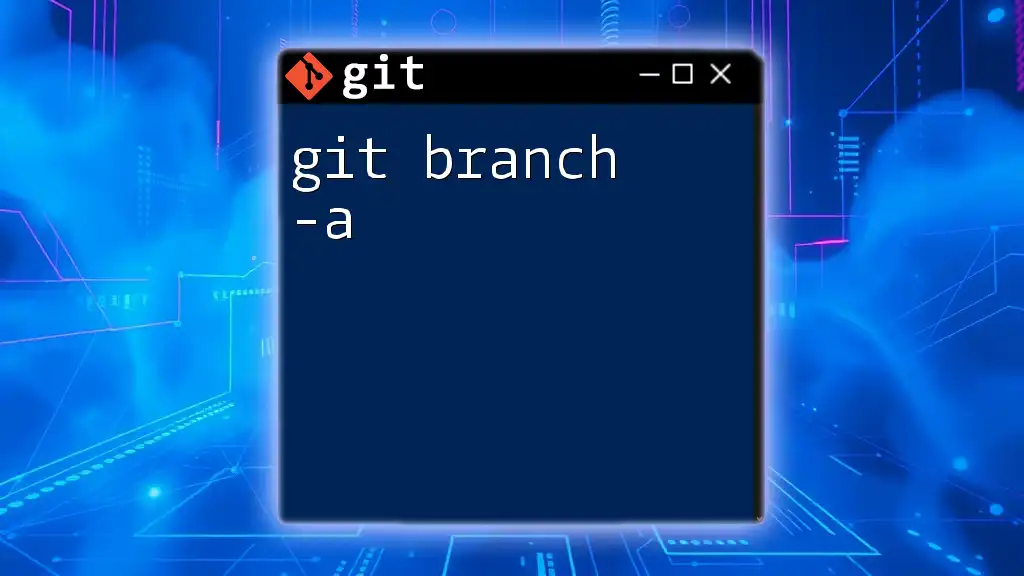
Common Scenarios for Using `git branch -m`
Scenario 1: Correcting a Typographical Error
Imagine you have created a branch called `feautre-logout` (misspelled). To correct it, execute:
git branch -m feautre-logout feature-logout
Resolving typographical errors early helps avoid potential confusion for you and your team later down the line.
Scenario 2: Adapting Branch Names for Clarity
Sometimes, projects evolve, and branch names need to reflect that evolution. For example, renaming `feature-new-search` to `feature-advanced-search` can clarify the purpose of the branch after new functionality is developed. Use:
git branch -m feature-new-search feature-advanced-search
Such proactive name adjustments foster better communication and alignment within the team.
Scenario 3: Keeping Branch Naming Conventions
Maintaining a consistent naming convention is vital in larger teams. If your team adopts a naming scheme that includes prefixes like `bugfix/`, you might want to rename:
git branch -m fix-feature-bug bugfix/feature-bug
By ensuring all branches adhere to the agreed-upon format, you help the workflow remain organized and intuitive.

How to Verify Changes After Renaming
To confirm that your branch has been renamed successfully, you can list all branches in your repository by using:
git branch
This command will provide you with a current view of all existing branches, including the renamed one.
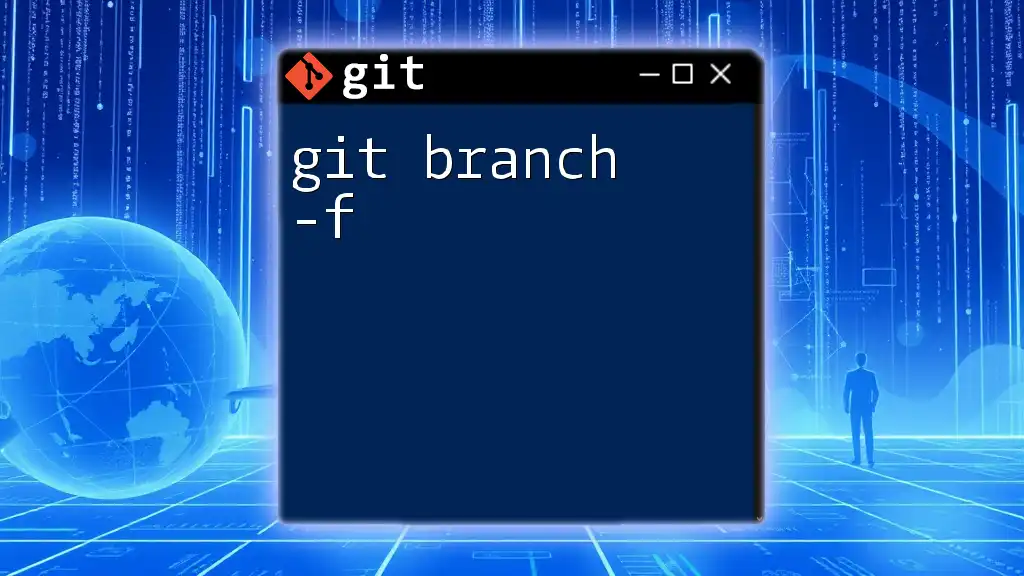
Potential Issues and Troubleshooting
Common Problems
One of the most commonly encountered issues when renaming branches is attempting to create a new branch name that already exists. If you try this, you will see an error message similar to:
fatal: A branch named 'existing-branch-name' already exists.
In such cases, you will need to choose a different name.
Preventing Errors
To minimize the chance of encountering errors during the renaming process, always double-check the branch names you’re working with. Using descriptive and unique branch names is a good practice that results in fewer conflicts and enhances traceability.
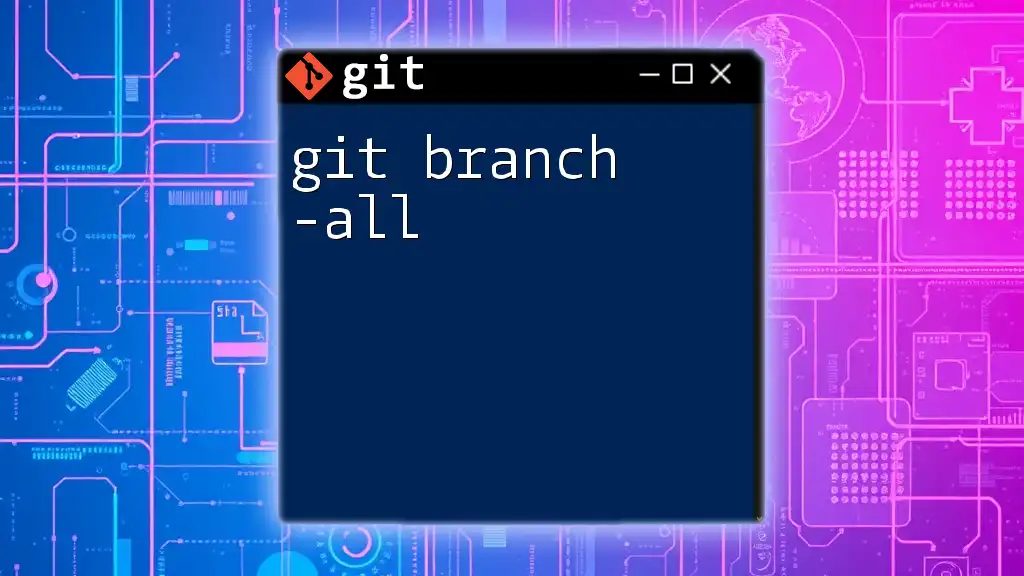
Conclusion
The `git branch -m` flag is an invaluable command in Git that facilitates the organization and clarity of your branches. Whether correcting typos, reflecting the evolution of a project, or adhering to naming conventions, mastering this command is essential for optimal Git usage.
Regular practice with `git branch -m` will not only streamline your workflow but also allow for better collaboration within your teams. As you gain confidence in using this command, consider exploring additional Git commands to bolster your version control skills comprehensively.
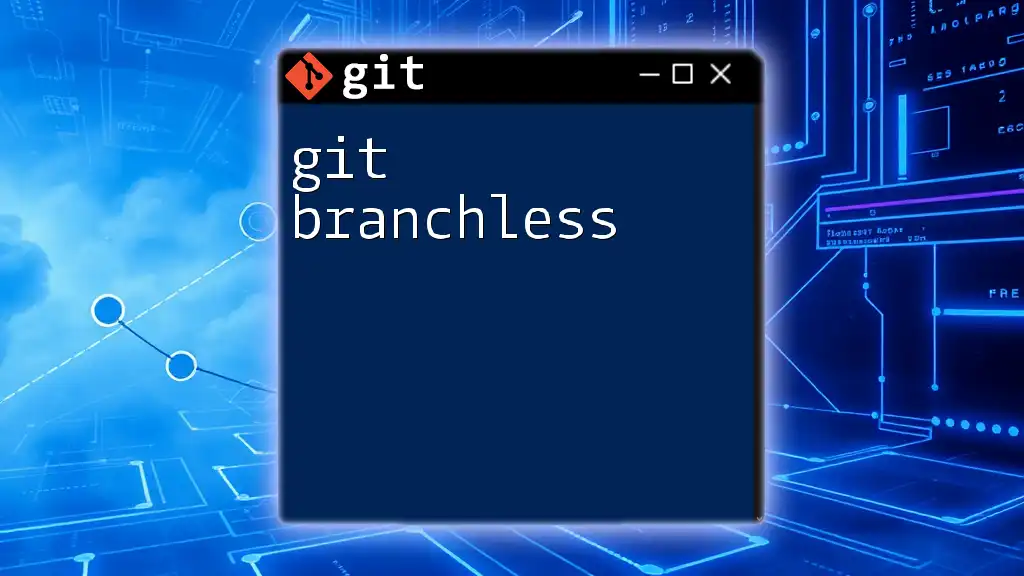
Frequently Asked Questions (FAQ)
Can I rename a branch that has unmerged changes?
Yes, you can rename branches with unmerged changes, but ensure that your work is saved, as some operations might require further commits.
What happens to commits when I rename a branch?
No commits are lost when you rename a branch; the branch simply points to the same commit as before.
Can I rename remote branches using `git branch -m`?
Directly renaming remote branches cannot be done with `git branch -m`. Instead, you can delete the remote branch and push the renamed branch to the remote repository.








